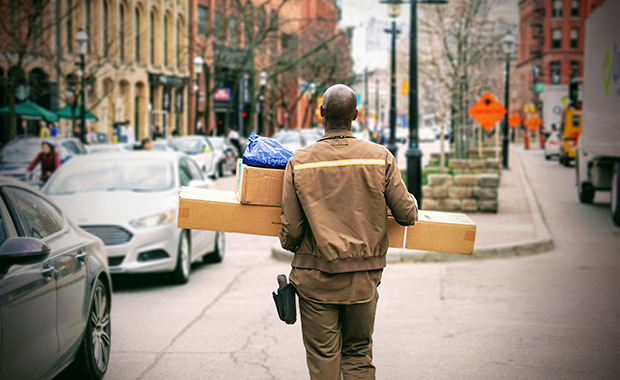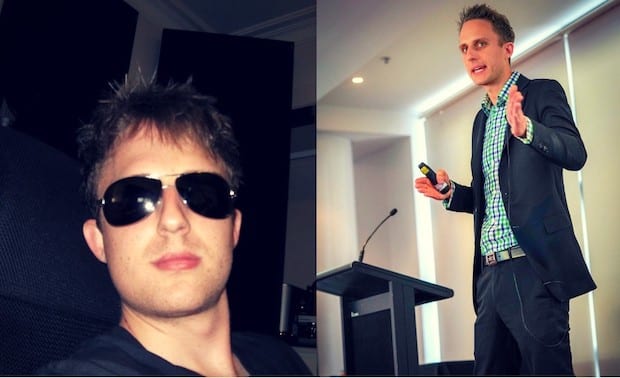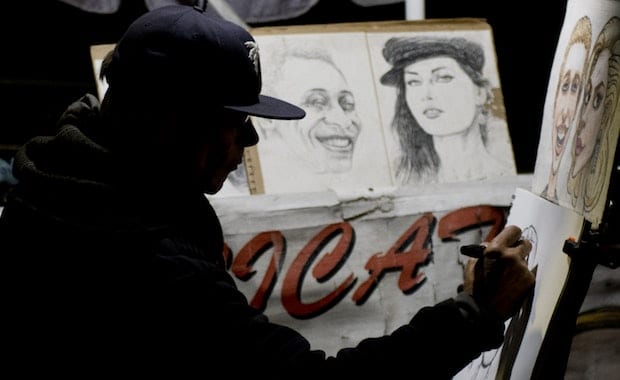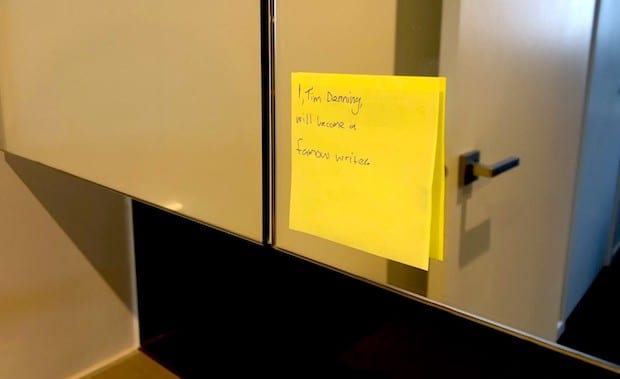Life
How A Trip To San Francisco Can Change Your Perspective

A few months back, I was told by a few people to take a holiday. Without any real plan, I booked flights to San Francisco and LA. Having never traveled to the US before, I wasn’t sure what to expect or how the country would make me feel at the end of my trip.
When I arrived in downtown San Francisco, the city felt strangely like Melbourne where I’m from. On the first day, I hired a bike and rode across the Golden Gate Bridge. It was only once I got near the coastline that the city felt very different.
The Golden Gate Bridge is work of art and no words can describe it. It’s simply beautiful and a marvel of modern day engineering. Getting to go over the bridge is an experience in itself. All of a sudden, all your worries and problems seem so far away, and all that matters is the current moment.
Our world is shaped by the things we choose to surround ourself with, and prison shouldn’t be one of those things. The more I explored San Fran, the greater my love for Australia became. It’s easy to think that the grass is always greener, but it’s not. As it turns out, I already live in one of the greatest cities in the world.
Below are the 5 things that changed my perspective after visiting the US:
1. Whenever there is hype beware (Silicon Valley)
For the last few years, everyone has told me how magical Silicon Valley is. I decided on this trip to find out for myself. When I arrived in Silicon Valley, it looked like any other friendly neighborhood. I thought I must have been not quite where the action was.
After hopping in an Uber, I drove through the streets into the so-called hotspots. What I saw was normal houses, next to traditional business parks that happened to have the world’s most famous tech logos stuck to the side of the building.
I gazed in wondering what magic was occurring inside and what the secret cool aid was that they were all drinking. Thankfully, I got my chance to get behind the closed doors and the private security that surround these buildings like a prison.
Don’t get me wrong; Silicon Valley creates some amazing things in our world, but these same ideas, products, and services can be created anywhere across the globe. The awesomeness that is created is not just possible in Silicon Valley; it’s possible anywhere. Silicon Valley just has a high concentration of very cool companies in one place.
2. San Fran business culture is phenomenal
There was definitely something in the water as I visited each of the famous San Fran companies such as Google, Facebook, and LinkedIn. If I had to link this good feeling to anything, I would say it’s probably that the employees feel they’re changing the world.
What they’re working on is the stuff of dreams, and they know it. It’s not about being better than each other but it’s about working together to do seriously cool stuff. There is no real sense of ownership, and you’re free to go off and try out an idea.
“Failure is celebrated, and the only must is innovation”
If your business is not growing, it’s dying in San Fran. Once high-growth products like Google Adwords are begin replaced, and nobody is negative about that fact.
Declining performance in certain products is expected, and as long as you’re building the next big thing, then it’s fine. San Fran isn’t about the location itself; it’s about the people who live and work there. The attitude of “anything is possible” is infectious.
The perceived downside to this attitude is that San Fran is full of elitist snobs that think they’re better than everyone else. I for one didn’t get a whiff of this vibe and think that this idea is more of a scarcity / jealousy mindset than anything else.
3. Beauty is all around us
One of my friends in San Fran commented that I was always making observations about the simplest things that he never notices. The way the traffic lights change, the way the trams look – everything was beautiful to me.
As soon as I returned home, the beauty of these same basic things was all of a sudden ignored again. I learned that if you see the beauty not just when you are in a new country, but when you are home, your perspective begins to change.
You find the good in life’s small pleasures, and your mind stops racing ahead for the next bit of technological dopamine. It still bothers me how much I look at my phone hoping for the little red notification to appear.
4. Homelessness is psychological
I was told to expect lots of homelessness, but the size of the problem was bigger than I imagined. I’ve seen homelessness before and got used to it. In San Fran, it wasn’t just that there were people who didn’t have a home; they were also mentally ill and shouted at people for no reason.
The problem is so big that it’s hard to ignore. Everywhere you go, you can’t avoid the issue. I found this to be a good thing because it taught me that problems shouldn’t be ignored, they should be solved. Everything I brought in San Fran had an extra tax. Initially, I had no idea why the advertised price always varied from what you paid until I asked (stupid me).
The extra tax was supposed to help the homeless people. I couldn’t see any sign of them being helped. It felt more like they were being ignored in the hope that they would take their problems elsewhere.
The lesson I learnt was that the homeless don’t need our money; they need psychological assistance if we really want to make a difference.
5. Being out of our comfort zone is a must
San Fran taught me that when I’m out of my comfort zone, I learn the most. It’s a nice feeling to have no idea where you’re going and to get lost once in a while. It’s funny too when you think that your destination is not far away until you discover how hilly San Fran can be in some parts.
Like with any downside, the upside was I got some much-needed exercise. I’m like a kid in a new city because I love to map things out in my mind and memorise where everything is. Within a few days, people were asking me for directions because they thought I was a local.
“Our comfort zone is where we are safe in the womb of life. Our real self is everything beyond that” – James Altucher
Strangely enough, I was able to tell them where to go. Pushing beyond our comfort zone allows us to see the world in a different way and interact with new kinds of people. I met many interesting characters during my travels that shared ideas with me that will forever change me.
The rush of excitement I got when I learned where the world was heading through technology is something that is hard to forget. Seeing people’s passion for changing the world one step at a time is the type of experience I was hoping to have from the start. Anything is possible as long as we collaborate and believe in humankind.
How are you going to change your perspective of the world for the better? Let me know on my website timdenning.net or my Facebook.
Did You Know
How Skilled Migrants Are Building Successful Careers After Moving Countries
Behind every successful skilled migrant career is a mix of resilience, strategy, and navigating systems built for locals.

Moving to a new country for work is exciting, but it can also be unnerving. Skilled migrants leave behind familiar systems, networks, and support to pursue better job opportunities and a better future for their families. (more…)
Life
10 Research-Backed Steps to Create Real Change This New Year
This New Year could finally be the one where you break old patterns and create real, lasting change.

Every New Year, we make plans and set goals, but often repeat old patterns. (more…)
Life
9 Harsh Truths Every Young Man Must Face to Succeed in the Modern World
Before chasing success, every young man needs to face these 9 brutal realities shaping masculinity in the modern world.

Many young men today quietly battle depression, loneliness, and a sense of confusion about who they’re meant to be.
Some blame the lack of deep friendships or romantic relationships. Others feel lost in a digital world that often labels traditional masculinity as “toxic.”
But the truth is this: becoming a man in the modern age takes more than just surviving. It takes resilience, direction, and a willingness to grow even when no one’s watching.
Success doesn’t arrive by accident or luck. It’s built on discipline, sacrifice, and consistency.
Here are 9 harsh truths every young man should know if he wants to thrive, not just survive, in the digital age.
1. Never Use Your Illness as an Excuse
As Dr. Jordan B. Peterson often says, successful people don’t complain; they act.
Your illness, hardship, or struggle shouldn’t define your limits; it should define your motivation. Rest when you must, but always get back up and keep building your dreams. Motivation doesn’t appear magically. It comes after you take action.
Here are five key lessons I’ve learned from Dr. Peterson:
-
Learn to write clearly; clarity of thought makes you dangerous.
-
Read quality literature in your free time.
-
Nurture a strong relationship with your family.
-
Share your ideas publicly; your voice matters.
-
Become a “monster”, powerful, but disciplined enough to control it.
The best leaders and thinkers are grounded. They welcome criticism, adapt quickly, and keep moving forward no matter what.
2. You Can’t Please Everyone And That’s Okay
You don’t need a crowd of people to feel fulfilled. You need a few friends who genuinely accept you for who you are.
If your circle doesn’t bring out your best, it’s okay to walk away. Solitude can be a powerful teacher. It gives you space to understand what you truly want from life. Remember, successful men aren’t people-pleasers; they’re purpose-driven.
3. You Can Control the Process, Not the Outcome
Especially in creative work, writing, business, or content creation, you control effort, not results.
You might publish two articles a day, but you can’t dictate which one will go viral. Focus on mastery, not metrics. Many great writers toiled for years in obscurity before anyone noticed them. Rejection, criticism, and indifference are all part of the path.
The best creators focus on storytelling, not applause.
4. Rejection Is Never Personal
Rejection doesn’t mean you’re unworthy. It simply means your offer, idea, or timing didn’t align.
Every successful person has faced rejection repeatedly. What separates them is persistence and perspective. They see rejection as feedback, not failure. The faster you learn that truth, the faster you’ll grow.
5. Women Value Comfort and Security
Understanding women requires maturity and empathy.
Through books, lectures, and personal growth, I’ve learned that most women desire a man who is grounded, intelligent, confident, emotionally stable, and consistent. Some want humor, others intellect, but nearly all want to feel safe and supported.
Instead of chasing attention, work on self-improvement. Build competence and confidence, and the rest will follow naturally.
6. There’s No Such Thing as Failure, Only Lessons
A powerful lesson from Neuro-Linguistic Programming: failure only exists when you stop trying.
Every mistake brings data. Every setback builds wisdom. The most successful men aren’t fearless. They’ve simply learned to act despite fear.
Be proud of your scars. They’re proof you were brave enough to try.
7. Public Speaking Is an Art Form
Public speaking is one of the most valuable and underrated skills a man can master.
It’s not about perfection; it’s about connection. The best speakers tell stories, inspire confidence, and make people feel seen. They research deeply, speak honestly, and practice relentlessly.
If you can speak well, you can lead, sell, teach, and inspire. Start small, practice at work, in class, or even in front of a mirror, and watch your confidence skyrocket.
8. Teaching Is Leadership in Disguise
Great teachers are not just knowledgeable. They’re brave, compassionate, and disciplined.
Teaching forces you to articulate what you know, and in doing so, you master it at a deeper level. Whether you’re mentoring a peer, leading a team, or sharing insights online, teaching refines your purpose.
Lifelong learners become lifelong leaders.
9. Study Human Nature to Achieve Your Dreams
One of the toughest lessons to accept: most people are self-interested.
That’s not cynicism, it’s human nature. Understanding this helps you navigate relationships, business, and communication more effectively.
Everyone has a darker side, but successful people learn to channel theirs productively into discipline, creativity, and drive.
Psychology isn’t just theory; it’s a toolkit. Learn how people think, act, and decide, and you’ll know how to lead them, influence them, and even understand yourself better.
Final Thoughts
The digital age offers endless opportunities, but only to those who are willing to take responsibility, confront discomfort, and keep improving.
Becoming a man today means embracing the hard truths most avoid.
Because at the end of the day, success isn’t about luck. It’s about who you become when life tests you the most.
Change Your Mindset
The Four Types of Happiness: Which One Are You Living In?
Most people chase success only to find emptiness, this model reveals why true happiness lies somewhere else.

In a world driven by rapid technological growth and constant competition, many people unknowingly trade joy for achievement. (more…)
-

 Did You Know4 weeks ago
Did You Know4 weeks agoThe Success Patterns You Inherited (And Didn’t Notice)
-

 Entrepreneurs3 weeks ago
Entrepreneurs3 weeks agoThe Essential Skills Every Entrepreneur Needs In 2026
-

 Business4 weeks ago
Business4 weeks agoThe Hidden Money Pit in Your Operations (and How to Use It)
-

 Change Your Mindset3 weeks ago
Change Your Mindset3 weeks agoHow to Turn Your Mind Into Your Greatest Asset (Instead of Your Enemy)
-

 Change Your Mindset3 weeks ago
Change Your Mindset3 weeks agoThe Silent Skill That Makes People Respect You Instantly
-

 Life2 weeks ago
Life2 weeks ago10 Research-Backed Steps to Create Real Change This New Year
-

 Tech2 weeks ago
Tech2 weeks agoWhat’s in a Name? How to Get Your Domain Right
-

 Did You Know1 week ago
Did You Know1 week agoHow Skilled Migrants Are Building Successful Careers After Moving Countries



















4 Comments